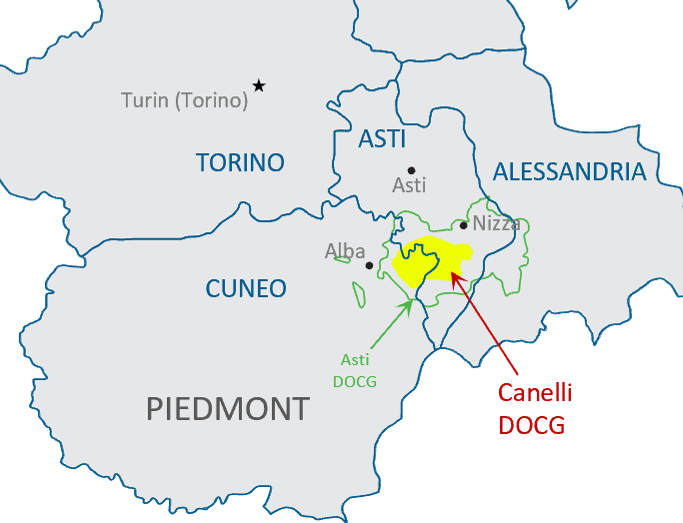Search
Menu

 Are you familiar with a grape variety called Muscat Canelli? That’s a synonym often used in California and other U.S. states for the main branch of the Muscat family, aka Muscat Blanc à Petits Grains in France and Moscato Bianco in Italy. This grape variety is well known for pungently aromatic sweet wines it typically produces. That style is not as popular as it once was, but it still commands a large fan base, especially in central and eastern Europe and Asia, and is among Italy’s largest wine exports in the forms of Asti Spumante and Moscato d’Asti.
Are you familiar with a grape variety called Muscat Canelli? That’s a synonym often used in California and other U.S. states for the main branch of the Muscat family, aka Muscat Blanc à Petits Grains in France and Moscato Bianco in Italy. This grape variety is well known for pungently aromatic sweet wines it typically produces. That style is not as popular as it once was, but it still commands a large fan base, especially in central and eastern Europe and Asia, and is among Italy’s largest wine exports in the forms of Asti Spumante and Moscato d’Asti.
So, how did the word Canelli come to be attached to this grape variety in California? It’s easy to understand when you think about all the Italian immigrants who came to California in the early days and were instrumental in starting the state’s wine industry. Wanting to distinguish this superior variety from other types of Muscat cultivars and perhaps from native American muscadine grapes, they gave it the name of Italy’s most famous source of Moscato Bianco wines: Canelli, a commune in the province of Asti in Piedmont (pictured at top).
 For a long time, the place-name Asti has been the one most closely associated with Moscato Bianco, but the town at the heart of the Asti wine zone, Canelli, was well known in the past. It was here that Carlo Gancia in 1865 adapted lessons learned in the Champagne region of France and made Italy’s first traditional-method sparkling wine, using the local Moscato grapes. Canelli has retained some of its former glory all along as a subzone of Asti DOCG, but now it has been brought back to the spotlight as a separate DOCG in its own right—Piedmont’s 19th and Italy’s 77th.
For a long time, the place-name Asti has been the one most closely associated with Moscato Bianco, but the town at the heart of the Asti wine zone, Canelli, was well known in the past. It was here that Carlo Gancia in 1865 adapted lessons learned in the Champagne region of France and made Italy’s first traditional-method sparkling wine, using the local Moscato grapes. Canelli has retained some of its former glory all along as a subzone of Asti DOCG, but now it has been brought back to the spotlight as a separate DOCG in its own right—Piedmont’s 19th and Italy’s 77th.
The new Canelli DOCG (the yellow area in the accompanying map) straddles the line between Asti and Cuneo provinces. It is completely surrounded by Asti DOCG (the area outlined in green on the map).  Despite Gancia’s legacy, Canelli DOCG will produce only sweet frizzante (fizzy) wines—that is, the Moscato d’Asti style—rather than fully sparkling versions. As in its previous incarnation as a subzone of Asti, the wines will be made from 100% Moscato Bianco. One novelty of the new denomination, though, is the addition of a Riserva level, for wines aged a minimum 30 months, including 20 months in bottle.
Despite Gancia’s legacy, Canelli DOCG will produce only sweet frizzante (fizzy) wines—that is, the Moscato d’Asti style—rather than fully sparkling versions. As in its previous incarnation as a subzone of Asti, the wines will be made from 100% Moscato Bianco. One novelty of the new denomination, though, is the addition of a Riserva level, for wines aged a minimum 30 months, including 20 months in bottle.

Canelli DOCG will remain under the wing of the Asti consorzio.